Deep diving into the “history of the entire world, i guess” — Pt. 1
Bill Wurtz’s “history of the entire world, i guess” is a masterpiece. In under 20 minutes, he covers hundreds of fascinating events and concepts. The pace is crazy fast, with one-second jingles telling the creation of religions and the fall of civilizations. It is so fast and fun to watch I didn’t realize that if I pause and read about the subjects Bill mentions so briefly I could actually learn a lot.
In this series, I’m going to take a deep dive into everything I didn’t know prior to watching the video. This part covers the Bronze Age.
5:11 — The far lands of Tinland
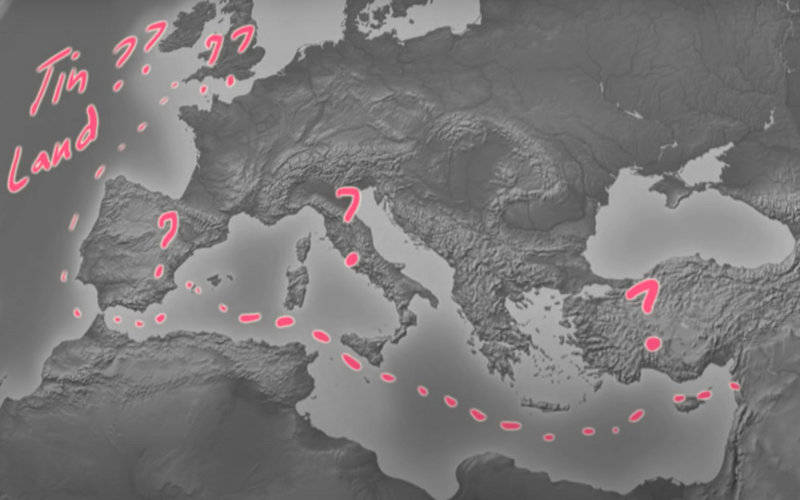
“Tired of using lame, sad metal? Introducing bronze! Made with special ingredient tin, from the far lands of Tinland [I don’t know, my dealer won’t tell me where he gets it]”
Tin is an essential metal in the creation of bronze. The first records of tin usage are about 3000 BCE. The demand for tin rose in the Middle East, where civilizations were advanced but only poisonous arsenical bronze could be crafted. Tin doesn’t come easy. It is 25,000 times rarer than iron and found in mines far away from its clientele. Even though tin was a game-changer, it’s early sources are unknown. The map from the video shows some of the known mining districts, omitting the Ore Mountains which is the earliest known one. The emphasis on the British Isles is not coincidental as it was a [relatively] great tin supplier.
5:31 — Norte Chico Civilazation
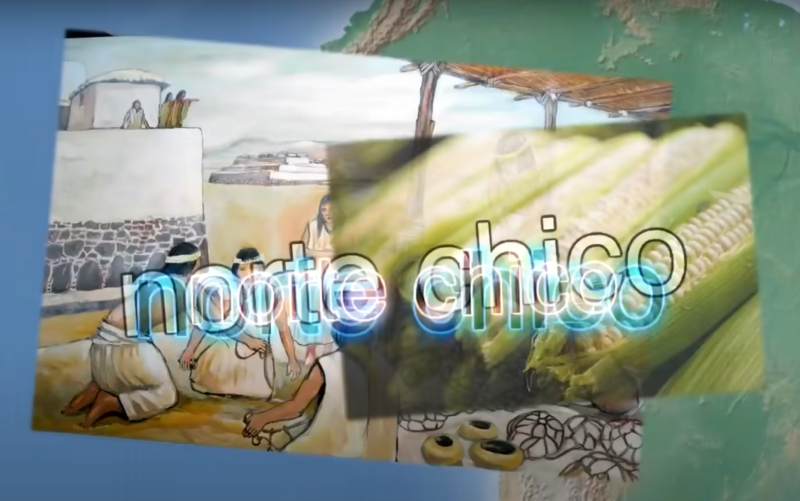
“Norte Chico!”
- It is the oldest known civilization in the Americas, thriving for about 1200 years. First mass settlement signs appear from around 3100 BCE.
- There is little evidence of art, no system of writing, no pottery, and a few signs of social stratification. Peculiar for a civilization spread across 1800 square kilometers with settlements and urban centers.
- Norte Chico is home to unique architecture with stone pyramids and large circular plazas.
- Even though corn is the wheat equivalent in the Americas the Norte Chicas [can I say that?] didn’t grow any. They were mainly based on maritime resources and some plants.
5:35 — The people with the horses
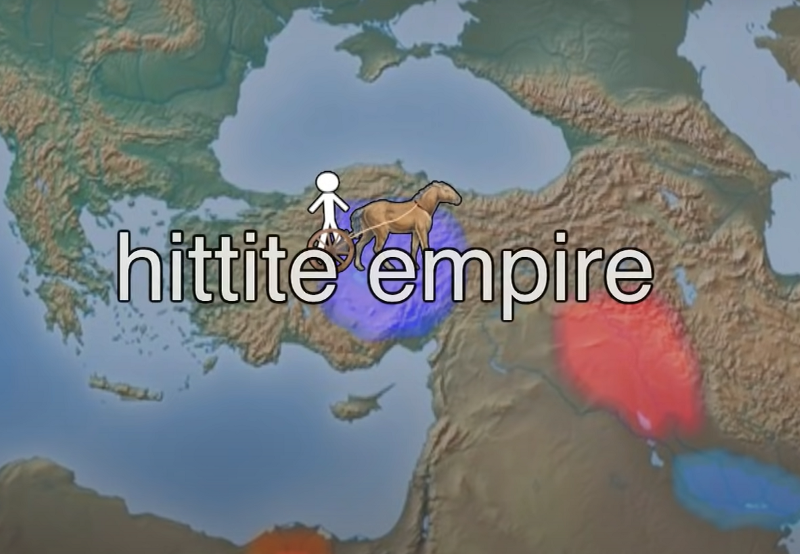
“Knock knock or clop clop, It’s the people with the horses. And they made an empire. And then everyone else copied their horses”
These guys are known for being really good at horse domestication, pioneering iron manufacturing, utilizing government officials, and signing the first known peace treaty. The Hittite empire was destroyed by the Sea People, a group of seafarers who ravaged the area for several hundred years. Their origin and motive remain unknown to this day.
5:41 — A beta version of the Greeks
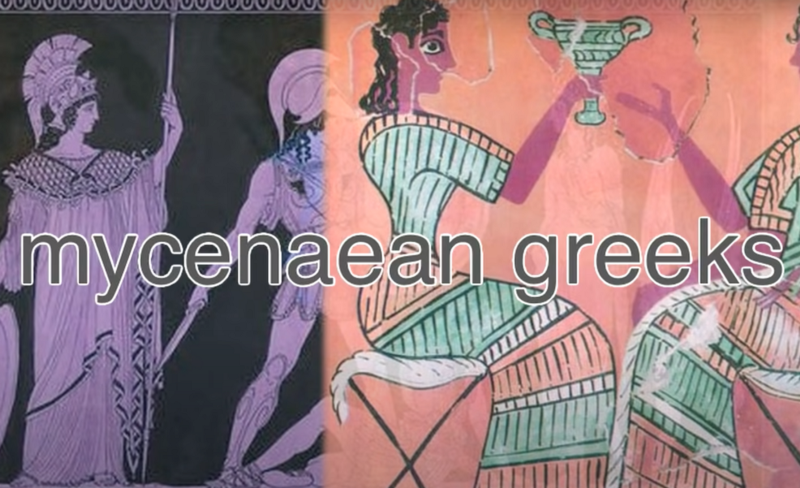
“Ah look it must be the Greeks, or a beta version of the Greeks”
Greece had its own bronze age flourish with the Mycenaean Greeks. They spoke the first form of the Greek language, Homer’s epics and most of the Greek mythology takes place in this period, and they had great advancements in architecture and art. This era of Greece was idealized by the later greeks.
Other Greeks and the mysterious Sea People destroyed the Mycenaean states around 1190 BCE, starting the Greek Dark Ages.
5:45 — Where did everybody go?
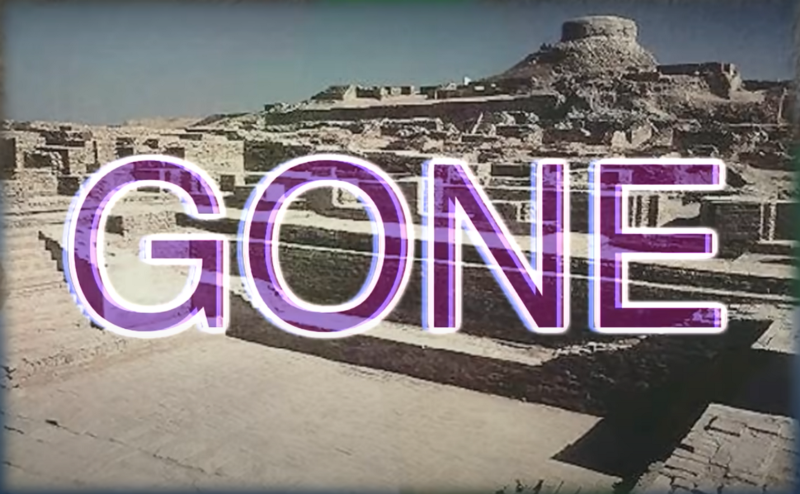
“Let’s check in with the Indus River Vally Civilization — they're gone”
The Indus River Vally Civilization was awesome and long-lasting. How did it disappear? No one knows for sure. There are three major speculations:
- They were conquered
- An earthquake changed the course of the river, forcing the inhabitants to flee
- A natural disaster [monsoon for example] might have destroyed the crops
5:49 — Hymns and Mantras and stuff
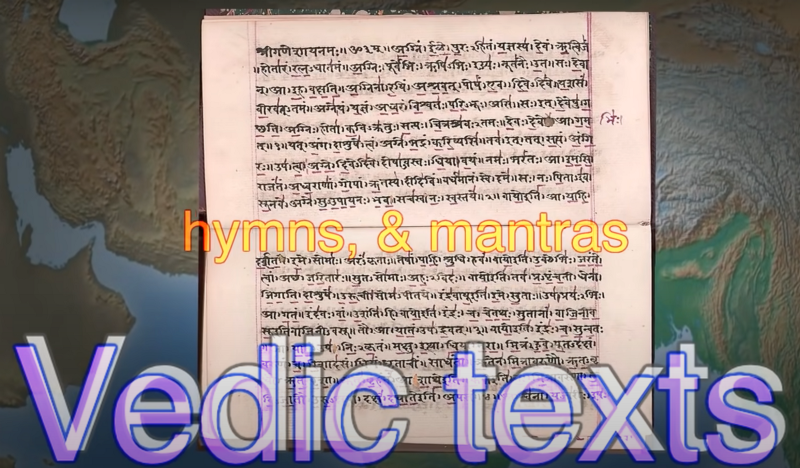
“New arrivals in India! Maybe it’s these horse people I was talking about, or their cousins or something. And they wrote some hymns and mantras and stuff. You could make a religion out of this.”
The Vedas are the first collection of Hindu texts, the oldest scriptures of Hinduism. There are four Vedas, each of whom consists of four parts:
- Samhitas — mantras and benedictions
- Aranyakas — texts on rituals, ceremonies, and sacrifices
- Brahmanas — commentaries on rituals, ceremonies, and sacrifices
- Upanishads — texts on meditation, philosophy, and spiritual knowledge
The Sanskrit word véda means “knowledge, wisdom”. It is believed that Brahma [the creator god in Hinduism] created the Vedas through revelations. The Vedas contains 20,379 mantras and has been orally transferred since the beginning of its composition around 1500 BCE. This kind of memorization ability can barely be seen today.
Take a peek at a hymn from the first Veda, the Rig Veda:
The human body is the temple of God.
One who kindles the light of awareness within
gets true light.
The sacred flame of your inner shrine
is constantly bright.
The experience of unity
is the fulfillment of human endeavors.
The mysteries of life are revealed.
6:02 — The end of the world as we know it
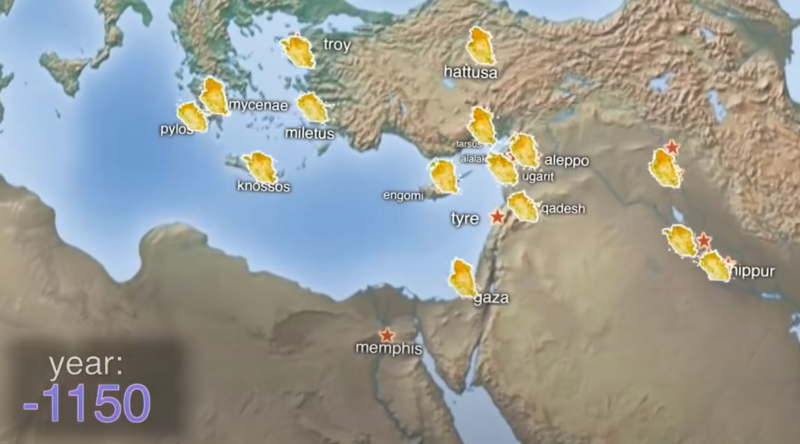
“There’s the bronze age collapse”
Around 1200–1150 BCE, in a span of a generation or two, almost all of the civilizations in the Near East were destroyed [the Egyptians were severely damaged but not demolished]. The reason for this mass destruction is unknown. Theories claim a wide variety of reasons, from the Sea People to mass earthquakes and trade disruptions. The scale and pace of this event make it one of the greatest mysteries of human history.
6:03 — It’s business time
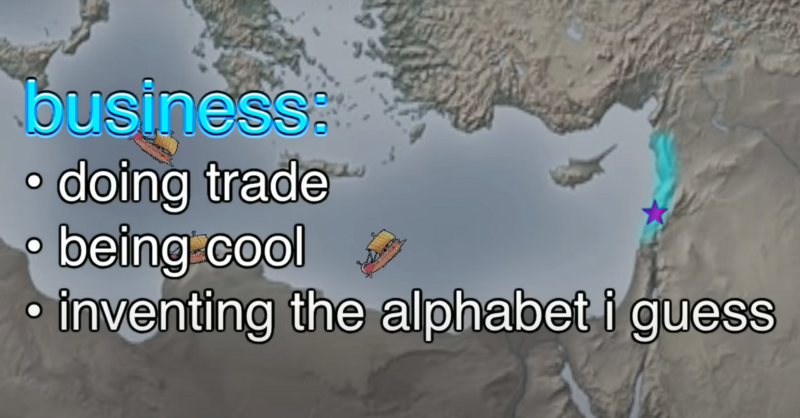
“Now the Phoenicians can get down to business!”
The Phoenicians were merchants based in today’s Lebanon, and they were very skilled at sea trade. The Bronze Age Collapse left a power vacuum in the Near East, which led to decades of Phoenician dominance over the trading routes in the Mediterranian Sea. The Phoenician alphabet was absorbed into the Greek alphabet, but it’s not the only alphabet that existed in that period.
Our minute is up
I learned a lot about the rise and fall of civilizations in the Bronze Age, and all of this was hidden between 5:11 and 6:13.